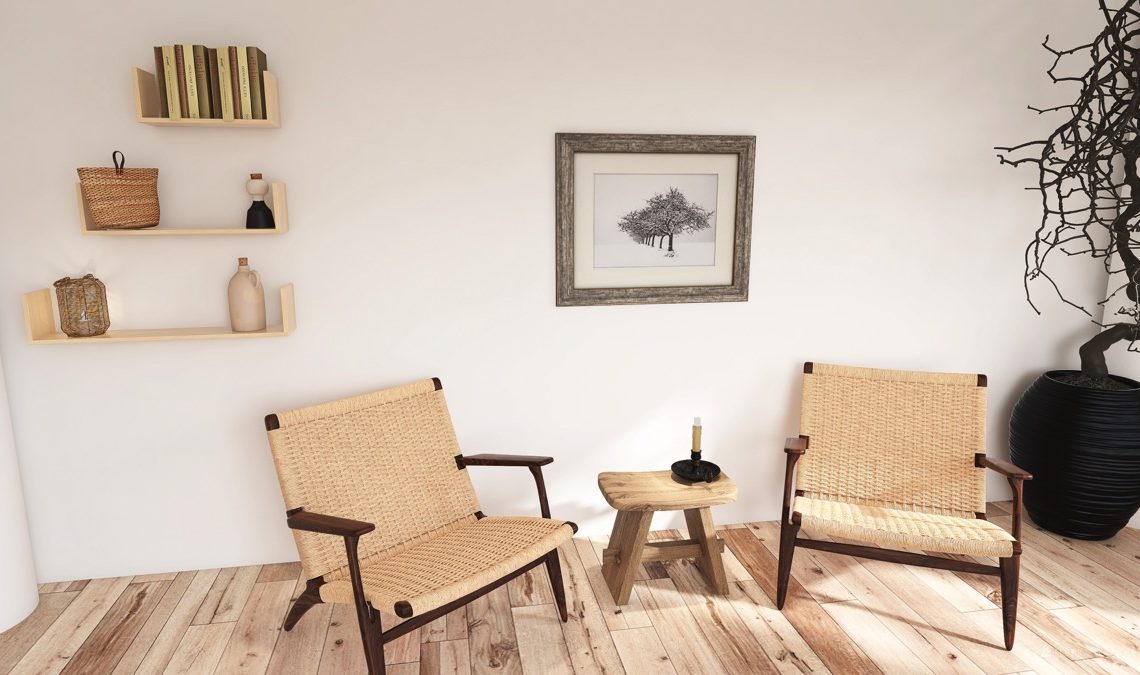
The Moodboard

The style that values the “beauty of imperfection”.
Wabi Sabi is an oriental philosophy that accepts the passage of time, appreciating its defects.
The main Japanese concept that is encouraged in Wabi Sabi is to accept imperfection, exalting the beauty of small things. So the interiors in this style are full of what is the “everyday life” of those who live in these spaces.
Nothing is perfect but asymmetry and irregular shapes are important.It is difficult to translate the term Wabi Sabi literally. The first term refers to the concept of simplicity, in harmony with nature. “Sabi” refers to the inexorable passage of time.
The materials
Wabi Sabi style has its foundations in the concept of “nature” with all its imperfect and irregular shapes.
Therefore some of these elements are:
- wood, with its irregular veins and knots
- bamboo
- stone, with its irregular shapes
For textiles:
- linen
- organic cotton
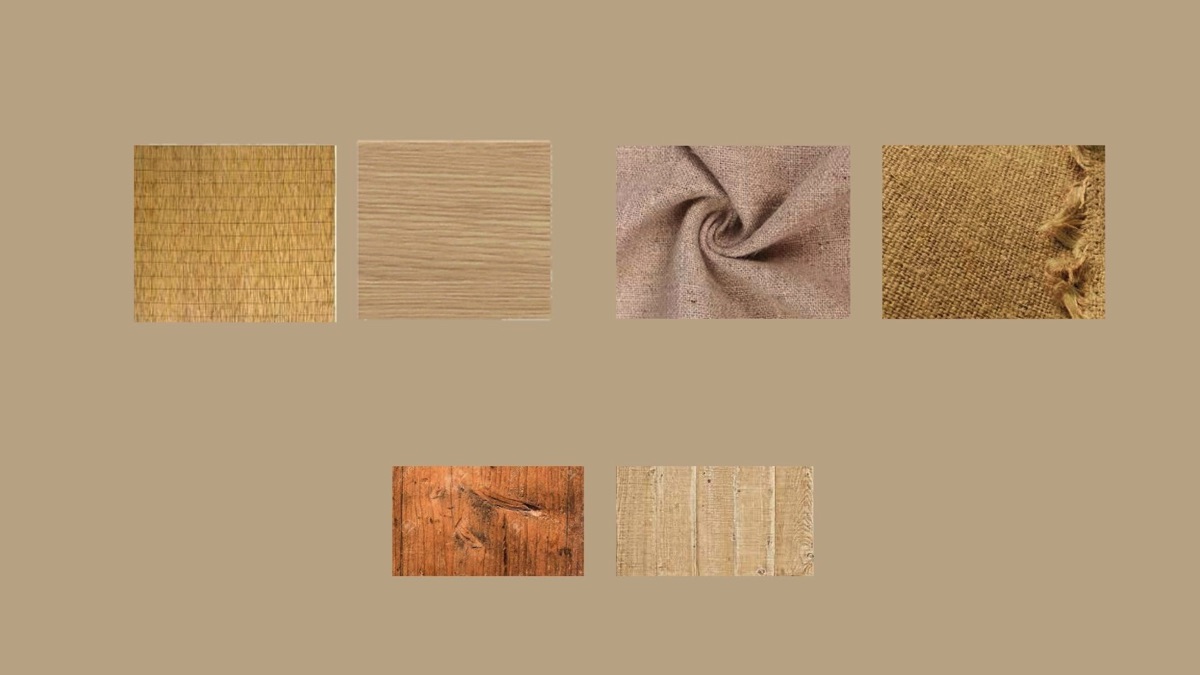
Colors
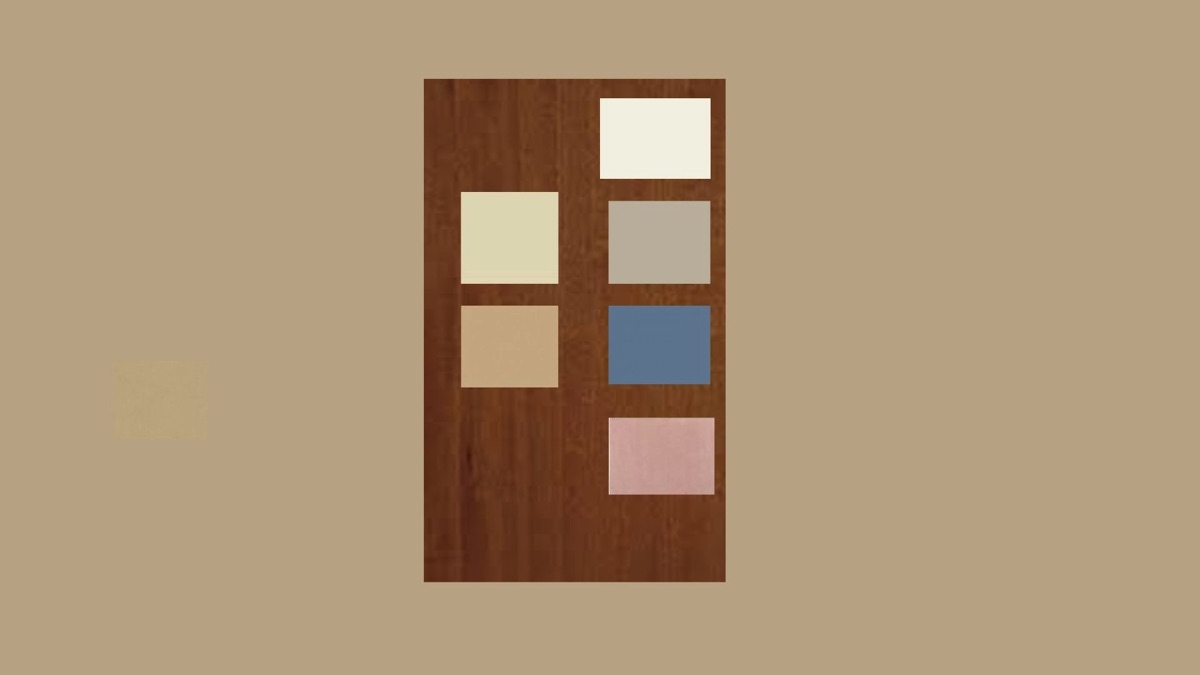
Definitely neutral shades:
- sand
- beige
- earth tones
But also:
- warm grays and whites
- soft pink tones
- greyish blue
- sage green
The importance of sustainability
The choice of using resistant materials such as stone, wood or bamboo increasingly raises the choice of spaces that are sustainable. There is a strong presence of recycled elements: for example, recycled furniture rich in history.
The Wabi sabi style prefers the strong presence of ceramics, hand-blown glass and in general handcrafted furnishing accessories. In perfect style, some accessories from my collection, in perfect Wabi Sabi style:
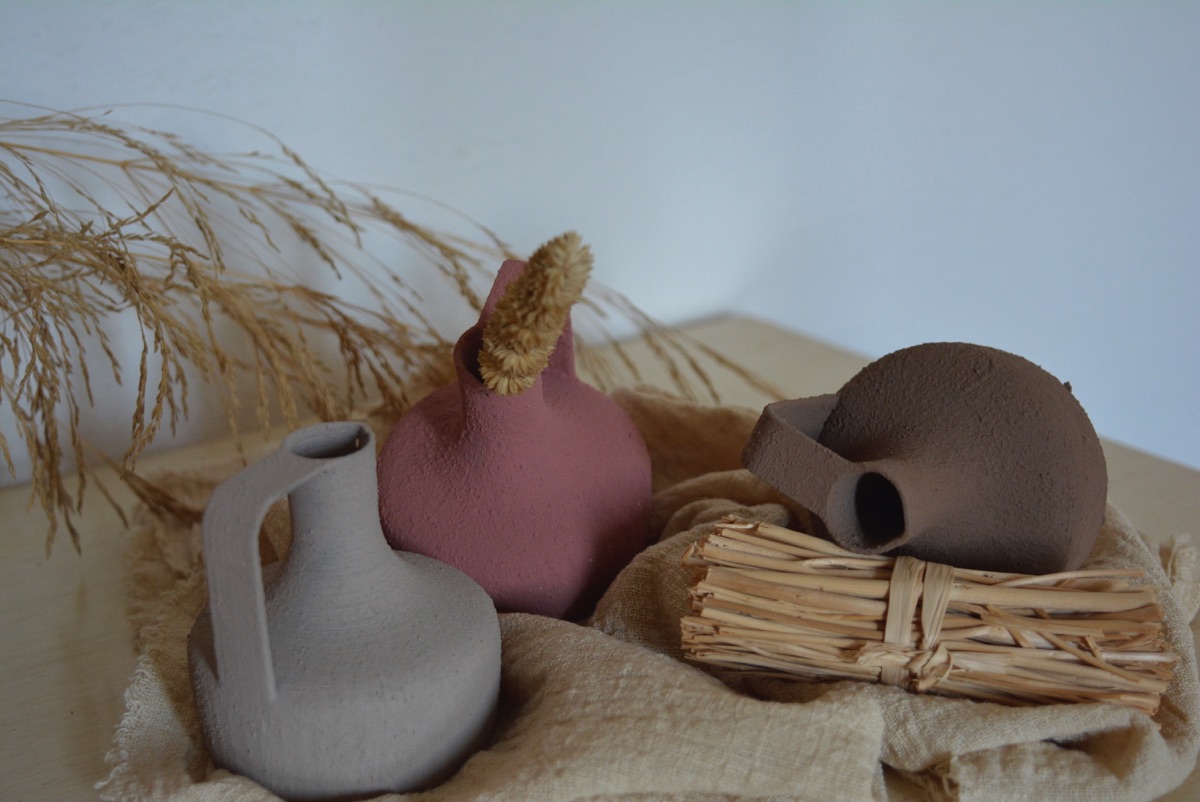
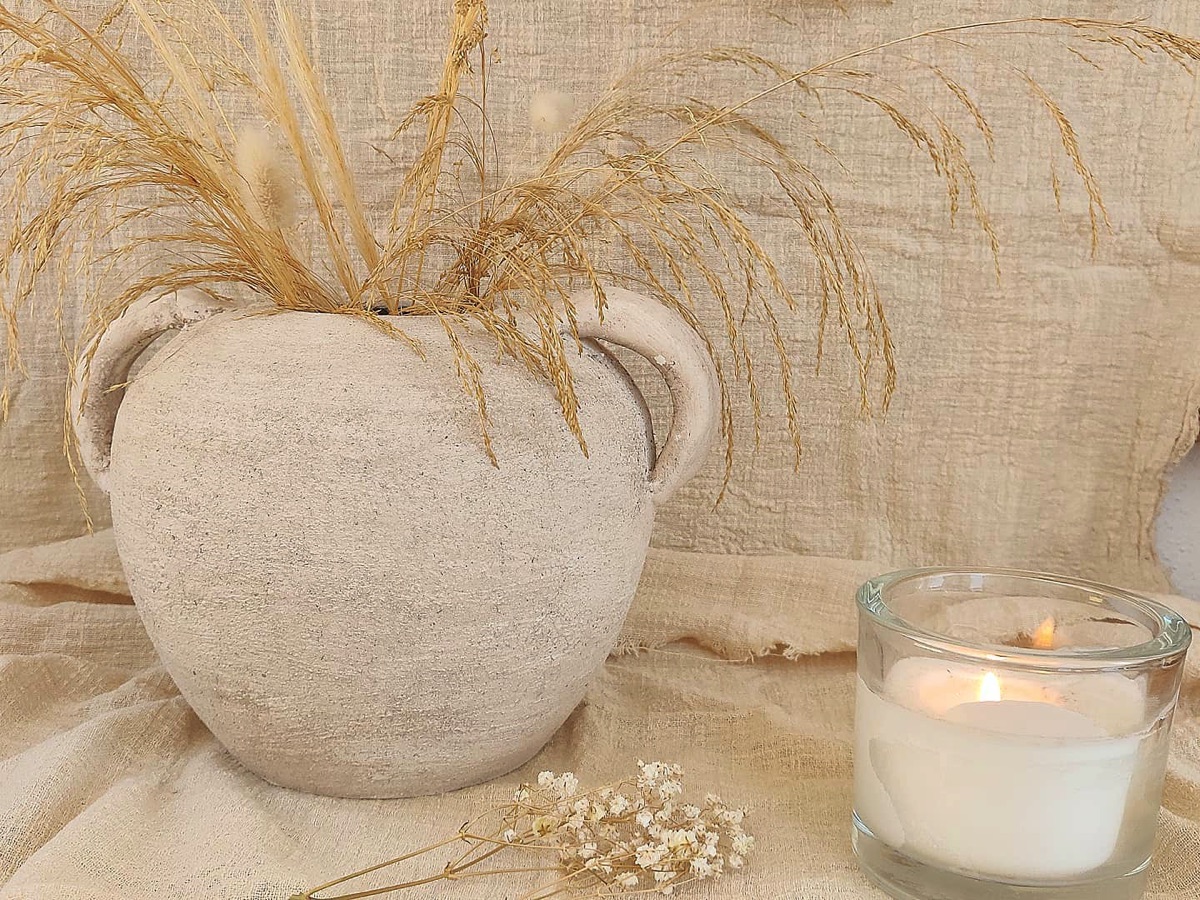
Another aspect is certainly reusing, an important part of the design. This translates into fewer choices from a “catalog” and more objects that are assembled, found, repaired and relocated in the same environment.
Wabi Sabi style homes are not inhabited by millimeter perfection, but the imperfect and asymmetrical matter is preferred. They highlight the exact opposition to pompous and institutional houses.
Antique or arte povera furniture emerge from nowhere to reinforce the forms of architecture.
Summary
The so called Wabi Sabi style of furniture:
- It prefers textures that are soft to the touch and with a high aesthetic quality
- It mixes rusty metals, gold foils, exposed concrete and textured paints
- It uses aged wood
- It uses opaque fabrics and materials
- It prefers to recover objects and furnishings, even if they are broken or in bad condition
- It uses rough concrete
- It does not use excessive spotlights
- Natural light becomes the undisputed protagonist and the furniture seems to be chosen and arranged perhaps more as a pretext to enhance it
- It prefers soft fabrics, in natural materials (cotton, jute, linen, wool…)
My interpretation of Wabi Sabi style
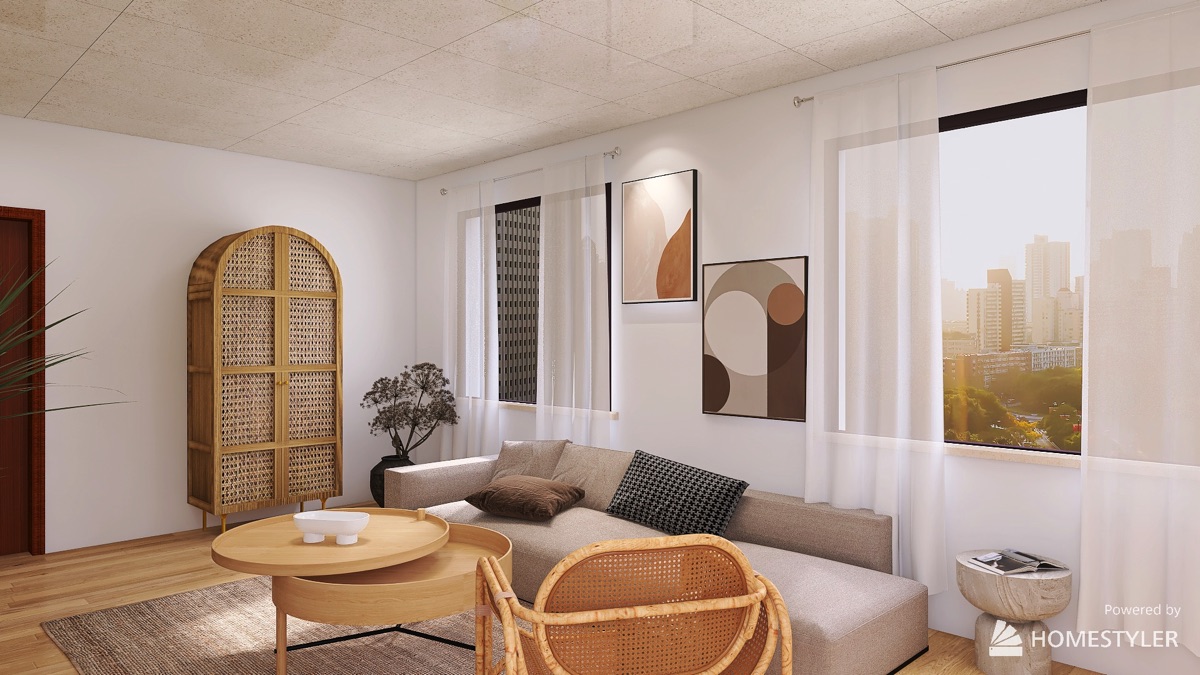
For the first project, the keyword is simplicity.
In this living room, minimalism reigns, expressed in the furniture, where a sense of “warmth” dominates, with the predominance of wood and rattan: this is evident in the wardrobe with doors and in the seat next to the sofa, but also in the parquet and small table.
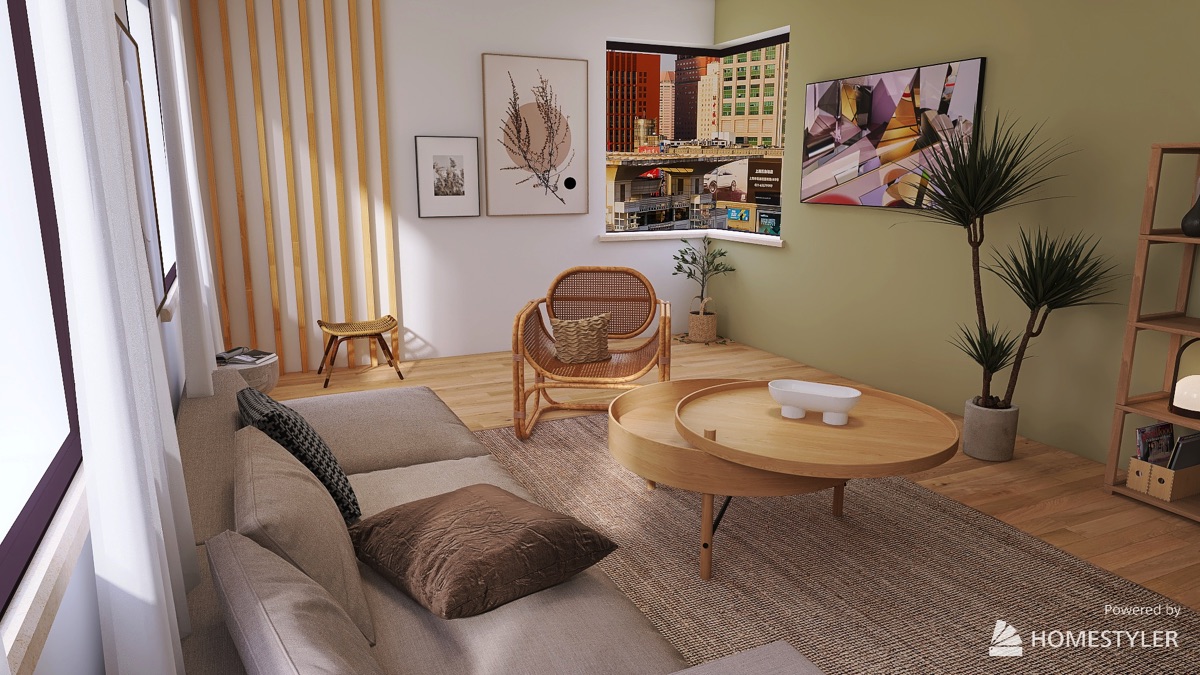
Everything is played on neutral and absolutely delicate tones in a sequence of color palettes that creates a strong sense of calm and tranquility.
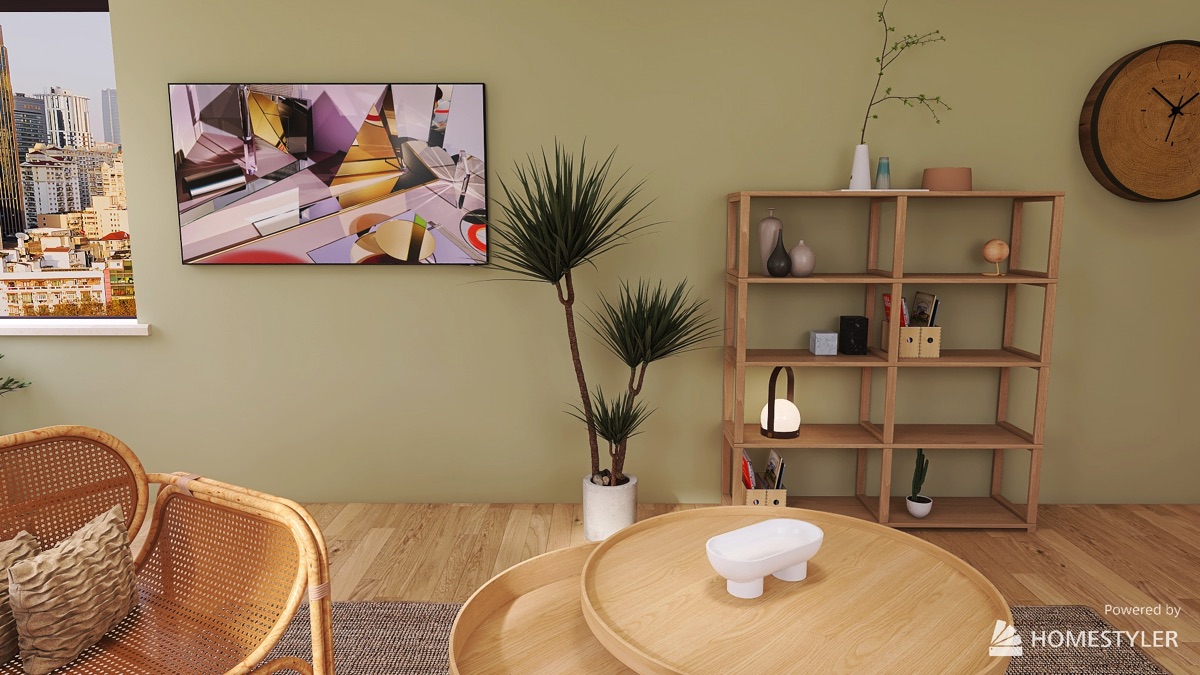
In the second project I gave maximum emphasis to the Wabi Sabi style.
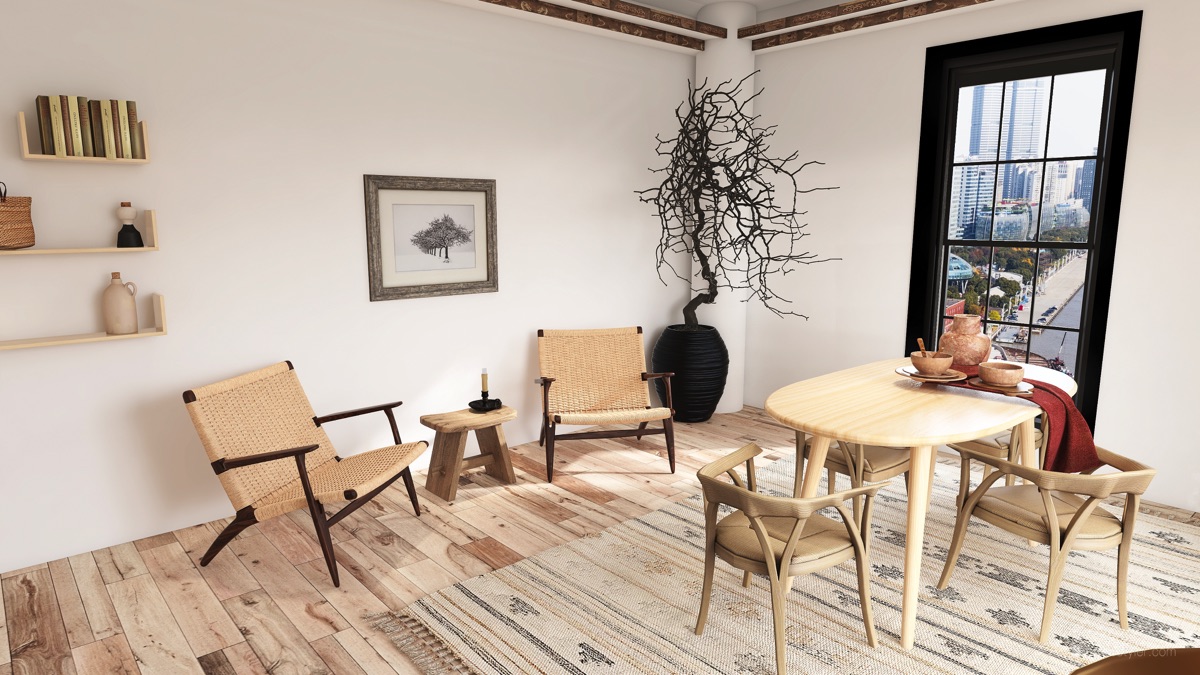
The woods are less refined and the salvaged elements are protagonists of the scene, creating the perfect scenography for this setting.
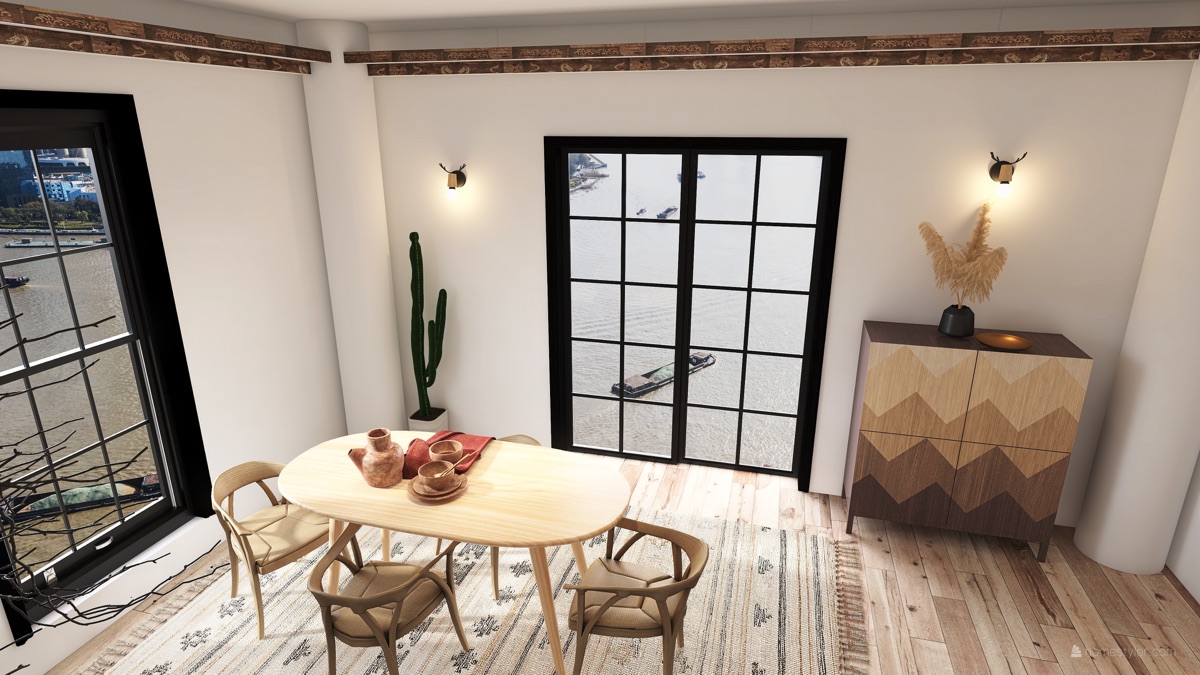
The beauty of the experience that characterizes the objects in this space make the temptation to replace them almost non existent, as they are perfect in the context of the scene.
And you? What do you think of this style? Would you use it in your home?